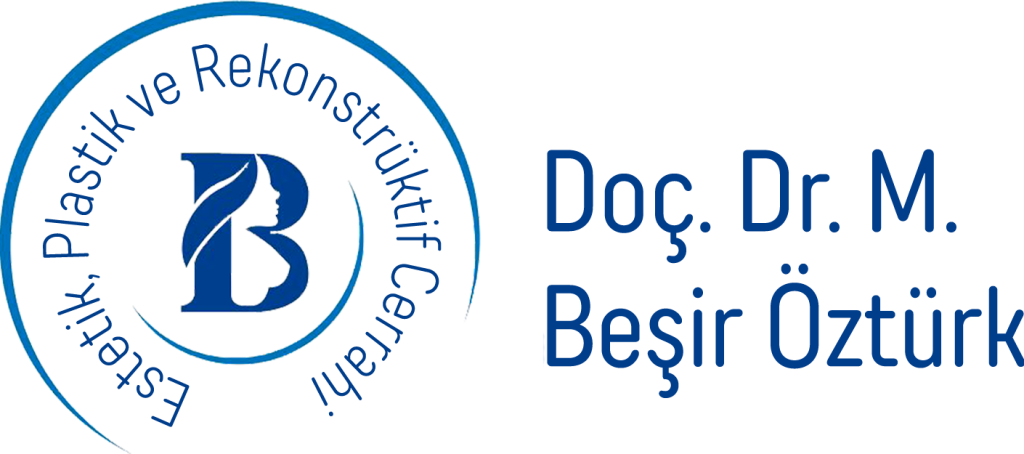
WHAT IS BREAST AUGMENTATION?
Breast augmentation is a cosmetic surgery which is designed to increase the size of the female breast. Many women in today’s world wish that their breasts were bigger. Some of these people have always have had small breasts. Others used to have larger breasts but have lost mass due to increasing age, breast feeding, or weight loss. Whatever the reason, breast augmentation is a way for women to increase the size of their breasts and improve their level of attractiveness.
Treatment Summary
The information below is for general informational purposes.
Exact durations and processes are determined after personal evaluation.
Operation Duration
6 - 8 Hours
Hospital Stay
4 - 6 Hours
Anesthesia
General Anesthesia
Full Recovery
4 - 6 Weeks
Breast enlargement methods: The most suitable and healthiest solution is a silicone breast implant. Breast augmentation surgery is one of the oldest surgeries performed worldwide. Breast implants do not pose any health problems.
With the latest technology, the need to replace breast implants every 5-10 years has been eliminated, and implants are now offered for lifetime use.
The History Of Breast Augmentation
People have been looking for ways to increase the size of a woman’s breasts for a long time. Surgeries to increase the size of the breast have been in existence since at least the late nineteenth century. The first documented breast augmentation procedure occurred in 1895 when a surgeon harvested fatty tissue from a patient’s tumor and implanted into the breasts. After this, a number of different surgeons set about trying to improve the shape or size of a woman’s breasts using a variety of different fillers. Some of these included substances as diverse as ivory, paraffin, polyester, glass, wood, and rubber.
True success began to come in the ’50s and ’60s, when surgeons began to hit on safer techniques and on implants that were both more natural feeling and less dangerous. From that time, surgeons have continued to develop and refine this surgery, making it possible for breast augmentation to be performed more safely than ever and with results that can be both dramatic and natural in appearance.
Common Methods Of Breast Augmentation
Implants
The most common method of breast augmentation is implants. These days, implants typically fall into two categories: saline and silicone. For more information on implants, please visit our breast implants page.
During the surgery, an implant is inserted into the breast, thus increasing the size of the breast. There are a number of different ways that an implant can be inserted. Some common places for the incision to be placed include the armpit, the breast crease, the navel and the areola.
The implants themselves may be placed above or under the muscle. Typically, placing an implant under the muscle makes the surgery more invasive and traumatic, and it may increase the recovery time somewhat. However, placing the implant under the muscle can often help to give a more natural appearance and feel to the breast.
Fat Transfers
One other method of breast augmentation occurs when fat is transferred from one part of the body to another. This idea has been popular for a very long time. In fact, the very first recorded breast augmentation involved the transfer of fatty tissue.
Historically, however, fat grafting has been rife with problems. When fat is removed from the body and reinserted at another place, it often dies or absorbs unevenly. This can lead to hard lumps and strange divots in the breast.
New procedures and techniques may be increasing the possibility of successfully performing fat transfers. During the operation, a surgeon will first suction out fat from another part of the body such as the buttocks, the abdomen, or the thighs. Then, the surgeon will frequently run the fat through a special piece of equipment which helps to prepare stem cells in the fat. The fat is then re-injected into the breasts, and the stem cells are able to develop and provide blood supply for the new fat. This helps it to integrate and become a part of the body again, and it helps to minimize fat death and reabsorption.
This sort of procedure is referred to by a number of different names, including “natural breast augmentation.” Obviously, this approach has some benefits. It is, in fact, real fat being used, so there is no foreign body in the breast. This can help to make the appearance and feel more natural. However, there are also some downsides. The procedure is still relatively new, and it is not as tried and true as implant-based augmentation. Also, some fat can still die during the transfer, and this can result in hard lumps that can feel unusual and that could potentially interfere with cancer detection. Also, fat transfer breast augmentations can typically only increase the size of the breast by one cup size or less.
Can A Breast Augmentation Help Me?
Breast augmentation can help women who have small breasts, and it can also help women who have breast asymmetry. It can also be performed to help with reconstructions after breast cancer. However, breast augmentation cannot fix saggy, pendulous breasts. Sagging breasts will typically require a breast lift instead. If the breasts are small and droopy, both procedures may be performed.
Are The Results Of Breast Augmentation Permanent?
Although most people think of breast augmentations as permanent procedures, the FDA says that women who undergo breast augmentation via implant typically will need to undergo some sort of follow-up surgery within a decade. Furthermore, some sort of surgery is likely to be necessary every decade from then on out.
Drawbacks Of Breast Augmentation
As helpful as breast augmentation can be, there is no denying that it has a number of drawbacks. There will, of couse, be some amount of pain and expense involved. And there is also a recovery time during which your motion will be hampered and your breasts will not be very attractive. However, even beyond this, there are a number of potential problems.
For example, some amount of scarring is virtually ensured. They will likely be small and well-hidden, but they will be there. Also, there is the potential for more obvious scarring. Additionally, there is the potential for an unusual appearance down the line as you age. The breast implant that looks right now may not serve you as well after 30 or 40 years. More seriously, breast implants can rupture and leak their contents, which could cause an unusual appearance and genuine health risks.
Furthermore, there is some danger of nipple numbness due to nerve damage during the procedure. Women who plan on breast-feeding may also find that getting a breast augmentation interferes with their ability to lactate.
Preparing For Breast Augmentation
There are a lot of important steps that go into a successful breast augmentation, and one of them is preparation. Your preparation for your surgery begins with research. Your research can help you to decide whether breast augmentation would be something that would be likely to improve your appearance. You can also get an idea for what types of implants are available, what the benefits and drawbacks of each are, and what incision locations you might be interested in. Your research will help you to know what is reasonable and realistic so that you can make the choices that will help your appearance and health the most.
It is equally important to do proper research as you prepare to select your surgeon. Not all surgeons are created equal, and when your breasts are on the line, you want only the best. Look at a variety of doctors in your area. Compare their before and after pictures. Note whether there are certain surgeons who consistently provide results that you like. Check to see if the surgeons in question are board certified.
When you have found one or a few that you are interested in, schedule a consultation and continue to evaluate the surgeon and his or her staff. Only move forward when you feel confident that you can trust the surgeon’s skills and character completely.
Once you have found a surgeon and set a date, your surgeon will give you specific instructions regarding how to prepare for your surgery. Follow these exactly. They will help keep you healthy and beautiful. For example, your surgeon will likely tell you to quit smoking. He or she will also give you instructions regarding when you should stop drinking before your surgery and what medications are safe to continue to take.
You will also want to ask someone to drive you to and from your surgery, and you will want to arrange to take time off from work. Around a week is usually sufficient for sedentary work, but exactly how long it takes you will depend on your own personal health and the particulars of your surgery.
During Breast Augmentation
On the day of your procedure, you will arrive at the surgical center. Before your surgery begins, you will need to be anesthetized. Local anesthetic and intravenous sedation are commonly used, but you general anesthetic is also sometimes used. The surgery usually takes one or two hours to complete, and it does not usually require an overnight stay.
For an implant-based augmentation, your surgeon will make a small incision in the place of your choosing and then insert the implant. After this is finished, the breasts are wrapped in gauze or put in a surgical bra.
After a few hours, when it’s clear that you are stable, you will be allowed to return home.
Recovering From Breast Augmentation
You’ll probably want to take it easy after your breast augmentation, but you should be able to begin getting up and walking relatively soon after your surgery. However, you should be careful to limit your activity. Avoid bending over, reaching over your head, heavy lifting, and strenuous activity. Hard exercise should be avoided for about a month and a half, and it should be eased into once the time has come. More gentle everyday activities can be gradually resumed within about ten days of the procedure.
Some amount of drainage, swelling, bruising, redness, tenderness, and itching is normal, but it should fade. The surgical scars will begin red, but they should fade to the color of your skin over the next six months or so. In some cases, it takes longer.
Your surgeon will probably ask you to wear compression garments or a surgical bra after yoru procedure. Please wear the garment as directed, as it will help you to be more comfortable and to heal properly.
As you heal, you may notice some amount of breast asymmetry. This is not necessarily a bad sign. Over the course of about six months, breast implants frequently drop or settle to a certain degree. This actually can help the implants to look more natural. However, it is very possible that one side will drop more quickly than the other. This will frequently fade with time, and it should sort itself out within half a year.
Breast Augmentation Cost
Like most cosmetic surgeries, breast augmentation costs can vary greatly. The geographical location of the surgery will play a role in determining costs, as surgical centers typically cost more to run in metropolitan areas than in rural areas. Similarly, the experience level of the surgeon who is performing the surgery will affect the size of the surgical fee.
Of course, the sort of implant used will also affect the cost, as silicone implants tend to be more expensive than saline implants. The size of implant may also affect the cost, and if an overnight stay at a hospital or surgical center is required, that will definitely increase your overall cost.
According to the American Society for Aesthetic Plastic Surgery (ASAPS), the average surgeon’s fee for saline breast implants was $3,486. The average surgeon’s fee for silicone implants the same year was $3,797. However, these numbers do not reflect medications, garments, medical tests, anesthesia fees and hospital fees. All told, your surgery will probably run somewhere between $5,000 and $15,000.
How To Pay For Breast Augmentation
Given that breast augmentations can be expensive, a lot of people wonder how they can pay for them. If you are having trouble paying for the surgery out of pocket, you might want to speak with your surgeon about financing. Depending on your financial situation, you may be able to pay for your surgery in installments rather than all at once.
Some people wonder whether they can get their health insurance to help cover their breast augmentation expenses. Given that breast augmentation is a cosmetic procedure, this is usually not possible. However, if the breast augmentation takes place as part of a reconstruction after a mastectomy, you will likely be able to get some help, depending on the specifics of your plan. For more information, please speak with yoru surgeon and with a representative from your insurance provider.
Frequently Asked Questions
Will my implants burst while exercising after breast augmentation surgery?
Silicone is made of a durable material, and it cannot burst unless it is exposed to an intervention with a sharp object.
Does breast augmentation surgery cause cancer?
No, it does not.
Can a breast enlargement cream bring my breasts to the size I want without the need for surgery?
The only way to achieve the appearance you desire aesthetically is through breast implants.
Is there an age limit for breast augmentation surgery performed for aesthetic purposes?
For breast augmentation or reduction surgeries, the age of 18 must be reached.
Is there a risk of loss of sensation in breast augmentation (implant) surgery?
No, there is no risk of any loss of sensation.

